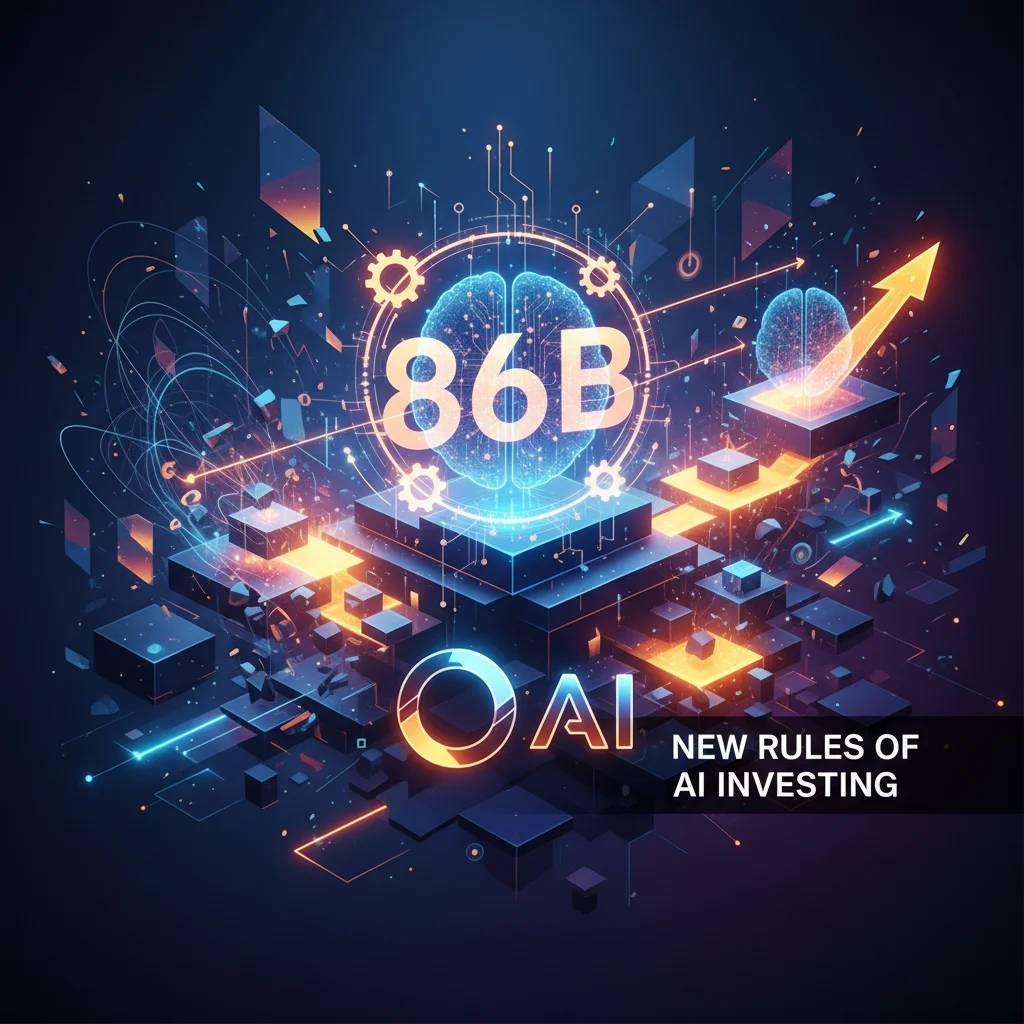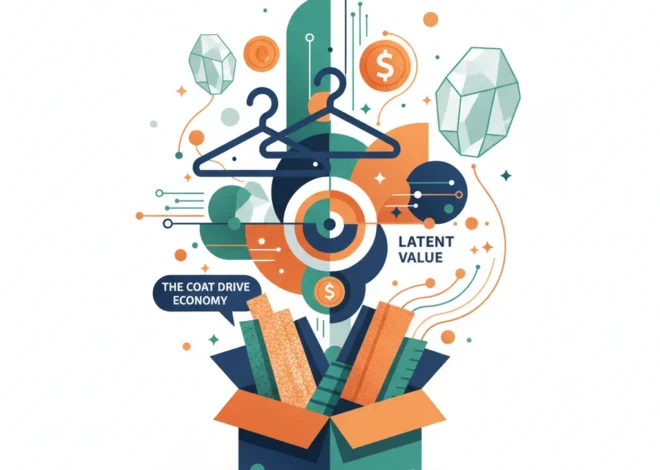
The $86 Billion Reshuffle: Inside OpenAI’s Landmark Deal and the New Rules of AI Investing
In the high-stakes world of artificial intelligence, few stories have been as captivating as the corporate drama that unfolded at OpenAI in late 2023. The sudden ousting and swift reinstatement of CEO Sam Altman was more than just a boardroom shuffle; it was a public spectacle that exposed the fundamental tension at the heart of the world’s leading AI company—a conflict between its altruistic non-profit mission and the colossal financial demands of its for-profit ambitions. Now, the dust has settled, and the next chapter is being written through a landmark restructuring deal that solidifies a new power structure and assigns a staggering $86 billion valuation to the creator of ChatGPT.
This isn’t a typical funding round. Instead, it’s a meticulously engineered transaction that provides a crucial release valve for early stakeholders while cementing the influence of its key commercial partners. For investors, business leaders, and anyone involved in finance or technology, this deal is a critical case study. It offers a glimpse into the future of corporate governance, the evolving landscape of venture capital, and the immense economic forces being unleashed by the generative AI revolution.
Decoding the Deal: A Tender Offer, Not a Capital Raise
At the core of this restructuring is a tender offer led by the venture capital firm Thrive Capital. It’s essential to understand the distinction here. OpenAI is not issuing new shares to raise fresh capital for its operations. Instead, this transaction allows existing shareholders—primarily employees and early investors—to sell their shares to a curated group of new and existing backers. This mechanism, common in late-stage private companies, serves two primary goals: providing liquidity for early believers and talent, and resetting the company’s valuation on the private stock market without the full scrutiny of an IPO.
The numbers involved are a testament to the explosive growth in the perceived value of AI. The $86 billion valuation represents a near-tripling from its valuation less than a year prior. This financial milestone is not just a vanity metric; it’s a powerful tool in the fierce war for AI talent, enabling OpenAI to compete with the lucrative stock options offered by tech giants like Google and Meta.
To better understand the financial architecture of this event, consider the key components:
| Deal Component | Description & Significance |
|---|---|
| Valuation | $86 billion, establishing OpenAI as one of the most valuable private tech companies globally. |
| Lead Investor | Thrive Capital, a prominent venture firm known for its savvy investments in late-stage tech. |
| Transaction Type | Tender Offer (Secondary Sale), allowing existing shareholders to cash out, not a primary capital raise for the company. |
| Primary Goal | Provide liquidity for employees and early investors, a key talent retention strategy in a competitive market. |
This structure reflects a mature phase in the startup lifecycle, where the focus shifts from pure fundraising to managing a complex capitalization table and rewarding the people who built the company. It’s a financial engineering feat that balances the need for growth with the demands of its stakeholders, a theme central to modern economics and investing.
UK's New Tax Gauntlet: Are High-Earning Professionals in the Crosshairs?
From Idealism to Pragmatism: The Evolution of OpenAI’s Hybrid Model
To fully grasp the significance of this deal, one must look back at OpenAI’s unorthodox origins. Founded in 2015 as a non-profit research lab, its stated mission was to ensure that artificial general intelligence (AGI) “benefits all of humanity.” The founders, including Sam Altman and Elon Musk, were wary of the immense power of AGI being concentrated in a single, profit-driven entity.
However, the economic reality of AI development soon set in. Training state-of-the-art models like GPT-4 requires astronomical computational power, which in turn requires billions of dollars in capital for servers and top-tier researchers. This capital-intensive nature was fundamentally at odds with a traditional non-profit structure. The solution was the creation in 2019 of OpenAI LP, a “capped-profit” subsidiary. This hybrid entity could attract massive investment—most notably a multi-billion dollar partnership with Microsoft—by promising investors a return on their capital, but only up to a certain multiple. Any profits beyond that cap would flow back to the original non-profit parent.
This structure was a bold experiment in corporate governance, an attempt to blend the missionary zeal of a non-profit with the financial engine of a hyper-growth startup. The events of November 2023, when the non-profit board fired Altman over concerns he was moving too fast and prioritizing commercial interests over safety, laid bare the inherent instability of this model. The subsequent employee revolt and Altman’s triumphant return, backed by Microsoft and other major investors, signaled a decisive power shift toward the for-profit arm.
A New Board for a New Reality
The finalization of the tender offer coincides with the formal establishment of a new, more corporate-savvy board of directors. This is arguably the most significant long-term outcome of the entire affair. The previous board, dominated by academics and non-profit-oriented members, has been replaced by a group with deep experience in big tech, finance, and government policy.
The new board is chaired by Bret Taylor, former co-CEO of Salesforce, and includes Larry Summers, former U.S. Treasury Secretary, alongside existing member Adam D’Angelo, the CEO of Quora. Crucially, Microsoft, the company’s most important partner and financial backer, has secured a non-voting observer seat. This gives the tech giant a direct line of sight into OpenAI’s governance without the legal complexities of a formal voting position.
This new composition signals a clear direction: OpenAI is being steered toward greater stability, more predictable governance, and a structure that its major financial partners can rely on. It’s a move away from philosophical debates about AI safety dominating board meetings and toward pragmatic decisions about product roadmaps, financial strategy, and market expansion. This is a form of risk management that institutional investors and the broader financial technology (fintech) ecosystem can understand and support.
Sequoia's Breaking Point: When Partner Politics Trigger a C-Suite Resignation
The Ripple Effect: What This Means for the Broader Economy and Investing Landscape
OpenAI’s restructuring is not an isolated event. It sends powerful signals across the technology and finance sectors, with wide-ranging implications.
- Venture Capital and Private Markets: The deal validates the sky-high valuations in the private AI market. It demonstrates a viable path to liquidity for founders and employees outside of a traditional IPO or acquisition, potentially reshaping how late-stage investing and trading in private shares are structured.
- The Future of Corporate Governance: While OpenAI’s hybrid model may be unique, its struggles highlight a broader challenge for mission-driven companies. How can organizations balance purpose with profit when faced with exponential growth and intense market pressure? This will be a central theme in business schools and boardrooms for years to come.
- The AI Economy: The deal solidifies the symbiotic relationship between AI pioneers like OpenAI and cloud hyperscalers like Microsoft. The immense capital and computing power required for foundational models create a high barrier to entry, suggesting the AI economy may become dominated by a few powerful, deeply interconnected players. This has significant implications for competition, innovation, and economic policy.
- Impact on Fintech and Banking: The AI revolution, spearheaded by companies like OpenAI, is a primary catalyst for innovation in financial technology. From AI-powered trading algorithms to automated wealth management and fraud detection, the underlying technology’s value is being proven in the private markets, fueling further investment and disruption within the traditional banking and finance sectors.
Up in Smoke: Why Big Tobacco's Indonesian Fortress is Starting to Crack
Conclusion: A New Chapter of Pragmatic Growth
OpenAI’s $86 billion restructuring is the final act of a dramatic corporate saga and the prologue to a new era of more pragmatic, commercially-focused growth. The deal successfully resolves the immediate governance crisis, rewards employees and early backers, and solidifies the company’s leadership position in the AI race. It is a masterclass in financial maneuvering that balances the needs of multiple powerful stakeholders.
However, the fundamental tension between its founding mission and its commercial incarnation remains. The new board and the powerful influence of investors like Microsoft and Thrive Capital have tilted the scales decisively toward the for-profit side. While OpenAI will continue to speak the language of benefiting humanity, its actions will now be judged through the lens of a financial and corporate structure designed for hyper-growth. For the world of finance, investing, and the global economy, the message is clear: the AI revolution will be capitalized, and the returns promise to be extraordinary.


